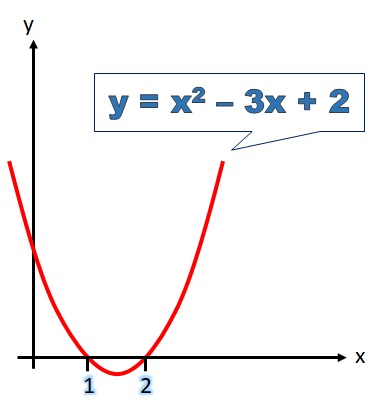Solving a Quadratic Equation Using a Graph
(KS4, Year 10)
 We can see that x = 1 and x = 2 solve the quadratic equation.
We can see that x = 1 and x = 2 solve the quadratic equation.
How to Solve Quadratic Equations Using a Graph
Solving a quadratic equation using a graph is easy.Question
Solve the quadratic equation shown below using a graph.Step-by-Step:
1
Draw the quadratic equation on a pair of axes.


2
Find the x-coordinate of the first point where the curve crosses the x-axis.
The curve crosses the x-axis at x = −1, which is a solution to the quadratic equation.
3
Find the x-coordinate of the second point where the curve crosses the x-axis.
The curve crosses the x-axis at x = 3, which is also a solution to the quadratic equation.
Answer:
We have solved the quadratic equation: x = −1, x = 3.3 Cases of Roots on a Graph
There are 3 possible cases for the roots of a quadratic equation.-
2 real, distinct roots. Occurs when the curve crosses the x-axis in two places.

-
1 repeated root. Occurs when the curve touches the x-axis at one point.

- 2 complex roots. Occurs when the curve does not touch the x-axis at all.

Worksheet
This test is printable and sendable






